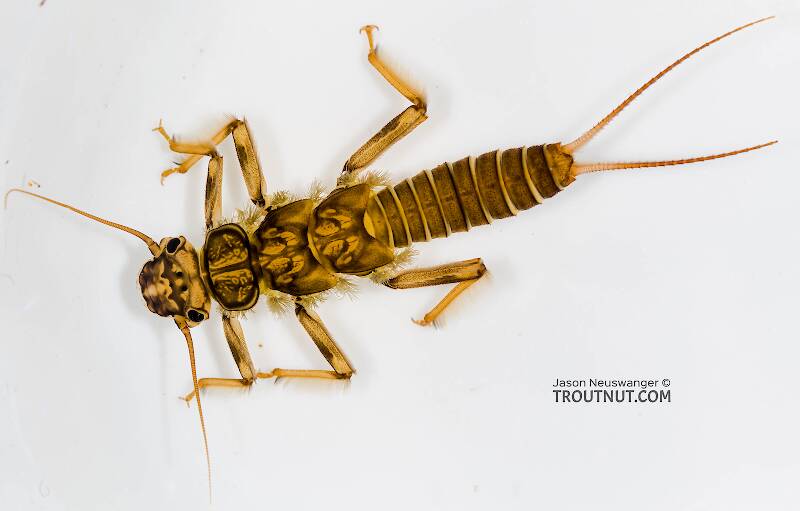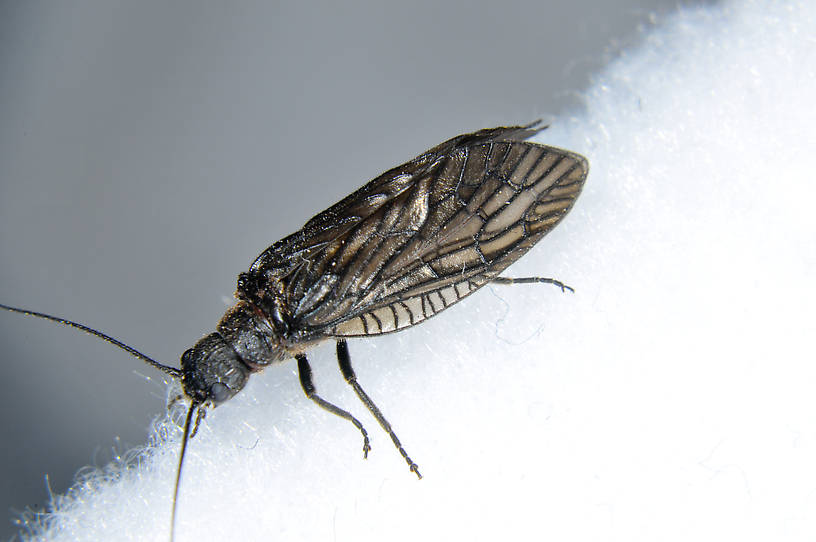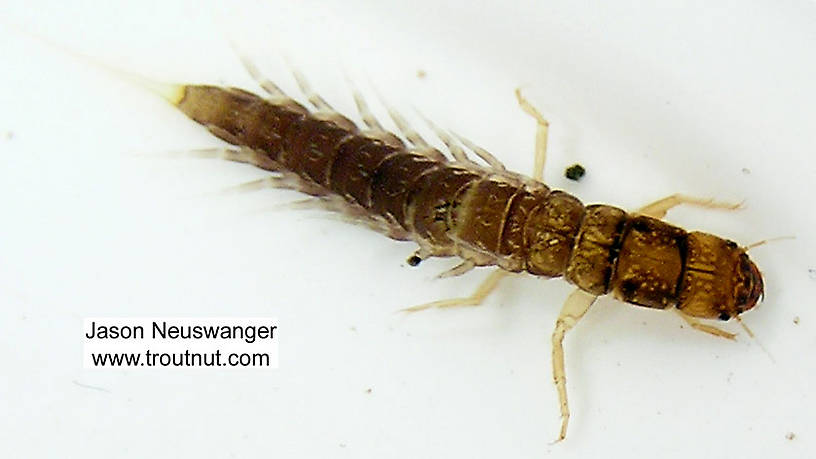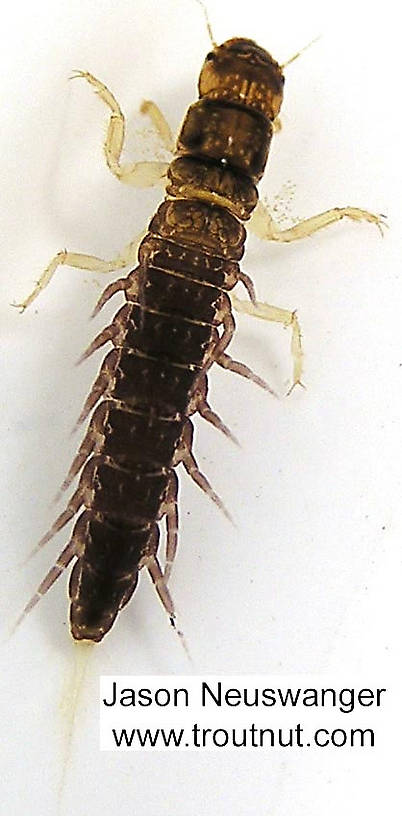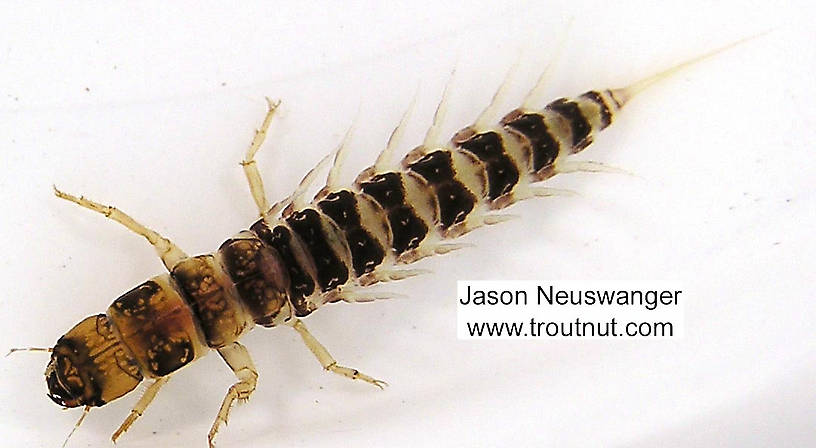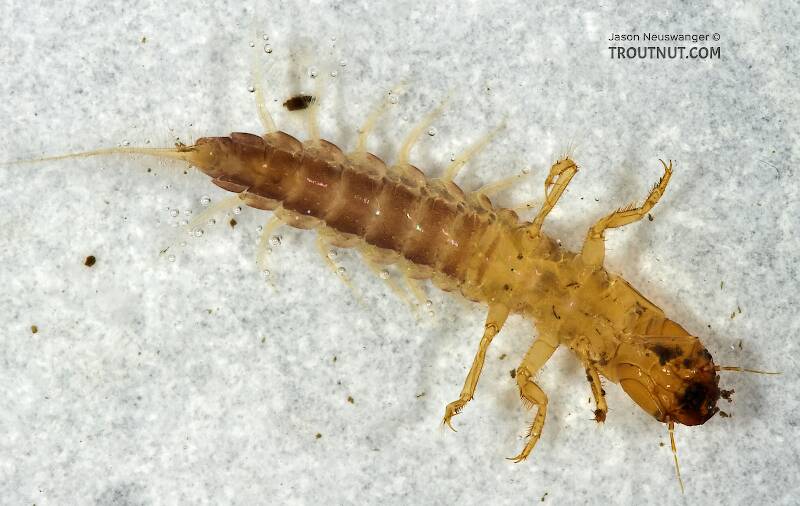
Salmonflies
Pteronarcys californica
The giant Salmonflies of the Western mountains are legendary for their proclivity to elicit consistent dry-fly action and ferocious strikes.
Featured on the forum

Troutnut is a project started in 2003 by salmonid ecologist Jason "Troutnut" Neuswanger to help anglers and
fly tyers unabashedly embrace the entomological side of the sport. Learn more about Troutnut or
support the project for an enhanced experience here.
Alderfly Genus Sialis
Alderflies are typically mistaken for small hellgrammites as larvae and large caddisflies as adults. They turn up often enough in nymph samples that it's nice to know what they look like. There are rumors of their occasional importance to trout, but the average anglers is not likely to encounter it.
Genus Range
Egg-Laying behavior
Time of day: Daytime
They lay their eggs on dry objects near the water. Ernest Schwiebert describes their egg placement in Matching the Hatch:
The egg masses are deposited on rocks, limbs, leaves and bridges where they are over running water and in the sunlight. They are placed so that the hatching larvae fall into the stream.
Larva & pupa biology
Current speed: Slow
Substrate: Silt
Specimens of the Alderfly Genus Sialis
1 Male Adult
4 Larvae
Start a Discussion of Sialis
References
- Schwiebert, Ernest G. 1955. Matching the Hatch. MacMillan Publishing Company.
Alderfly Genus Sialis
Taxonomy
Species in Sialis
Sialis hamata
1
2
Species in Sialis: Sialis hamata
23 species (Sialis aequalis, Sialis americana, Sialis arvalis, Sialis bilobata, Sialis californica, Sialis concava, Sialis contigua, Sialis cornuta, Sialis dreisbachi, Sialis glabella, Sialis hasta, Sialis infumata, Sialis iola, Sialis itasca, Sialis joppa, Sialis mohri, Sialis nevadensis, Sialis nina, Sialis occidens, Sialis rotunda, Sialis spangleri, Sialis vagans, and Sialis velata) aren't included.


